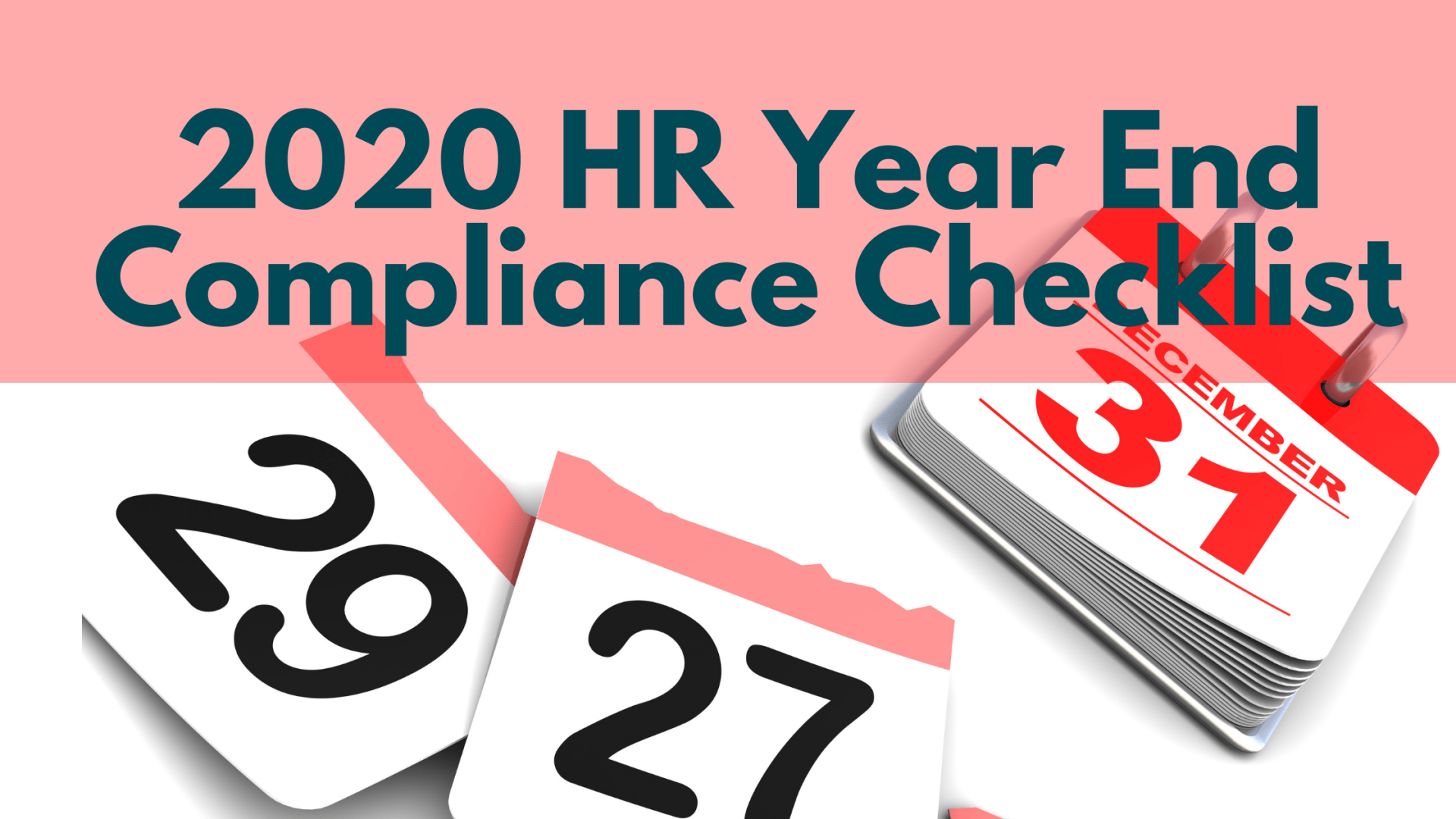Simco Blog

29 Mar, 2024
Highlights The CDC has dropped the five-day isolation recommendation for COVID-19-positive individuals. People are now advised to stay home until they have been fever-free for 24 hours and symptoms are improving. Not all COVID-19-specific employee leave laws have expired. Federal and state family and medical leave laws, and state and local sick leave laws, will often apply to employees with COVID-19. Important Date March 1, 2024: The CDC revised its isolation recommendations for people with COVID-19. The Centers for Disease Control and Prevention’s (CDC) new guidance that individuals no longer need to isolate from work for five days following a positive COVID-19 test may raise questions with employers about what leave they are required to provide to employees with the virus. The revised guidance, issued March 1, 2024, advises that people who are sick with COVID-19 or another respiratory virus stay home and away from others. However, isolation is not necessary if an individual with COVID-19 has been fever-free for at least 24 hours without medication and their symptoms are improving. The guidance states that the period people should stay home and away from others could be shorter, the same or longer than the previous guidance for COVID-19 isolation. The new guidance is not applicable to health care settings, which have their own CDC recommendations . From an employee leave perspective, employers should note that while most COVID-19-specific employee leave laws have expired, some—like New York state’s—are still in effect. Moreover, state and local paid sick leave laws that are not specific to COVID-19 apply to illness generally, including for a worker experiencing COVID-19 symptoms like fever. Some of these laws have specific provisions concerning communicable disease. In addition, sick workers may be eligible for leave for their own illness or to care for an ill family member under the federal Family and Medical Leave Act or similar state family and medical leave laws. Action Steps Employers should familiarize themselves with any remaining state or local COVID-19 leave laws that apply to them. They should also ensure compliance with non-COVID-19 federal, state and local leave law mandates, as they may apply to workers with COVID-19.

29 Feb, 2024
Keeping up with compliance developments can be difficult and time-consuming. This quarterly update highlights recent legal developments to help your organization stay on top of new requirements and minimize its compliance risks. Recent Federal Developments DOL Issues Independent Contractor Final Rule On Jan. 10, 2024, the U.S. Department of Labor (DOL) issued a final rule, effective March 11, 2024, revising its guidance on how to analyze who is an employee or independent contractor under the Fair Labor Standards Act (FLSA). The DOL’s new rule reinstates the multifactor and totality-of-the-circumstances analysis, which is generally viewed as more employee-friendly. As a result, the new rule will likely lead to more workers being classified as employees. DOL Updates Model Employer CHIP Notice The DOL has released a new model employer Children’s Health Insurance Program (CHIP) notice with information current as of Jan. 31, 2024. An employer is subject to this annual notice requirement if its group health plan covers participants who reside in a state that provides a premium assistance subsidy under a Medicaid plan or a CHIP, regardless of the employer’s location. The DOL’s model notice, which employers may use for this disclosure, is updated periodically to reflect changes in the states that offer premium assistance subsidies. Employers Must Use New Form I-9 As of Nov. 1, 2023, employers are required to use the newest version of the Employment Eligibility Verification form (Form I-9). The new Form I-9 includes updated instructions and many notable changes, including alternative remote verification procedures that employers enrolled in E-Verify can use to comply with their Form I-9 obligations. Employers should ensure they are using the new Form I-9, as continuing to use the outdated Form I-9 can trigger penalties. NLRB Issues New Joint Employer Final Rule On Oct. 27, 2023, the National Labor Relations Board released a final rule establishing new, broader criteria for determining joint-employer status. Joint employment situations can happen when two or more employers share personnel hiring, supervision and management practices. When a joint employment status exists, joint employers are equally responsible for compliance with applicable laws and regulations. The final rule had been set to take effect on Feb. 26, 2024. However, on Feb. 22, 2024, a federal judge in the U.S. District Court for the Eastern District of Texas delayed the implementation of the final rule to Mar. 11, 2024. DOL Increases Civil Penalty Amounts for 2024 On Jan. 11, 2024, the DOL released its 2024 inflation-adjusted civil monetary penalties that may be assessed on employers for violations of a wide range of federal laws, including the FLSA, ERISA, the Family and Medical Leave Act, and the Occupational Health and Safety Act. For example, the maximum penalty for failing to file a Form 5500 for an employee benefit plan increased from $2,586 to $2,670 per day. Employers should periodically review their pay practices, benefit plan administration and safety protocols to ensure compliance with federal requirements. EEOC Increases Enforcement Activity The U.S. Equal Employment Opportunity Commission (EEOC) is a federal agency responsible for enforcing federal employment discrimination laws, such as Title VII of the Civil Rights Act, the Americans with Disabilities Act and the Pregnant Workers Fairness Act. The EEOC experienced several noteworthy changes in 2023, including new leadership, structural changes and an increased budget. It also multiplied its enforcement efforts; at the end of fiscal year 2023, the agency reported a 52% increase in lawsuit filings from the previous year. These efforts are likely to continue in 2024. Recent State Developments New York Increases Salary Threshold for Exempt Employees On Sept. 15, 2023, New York State amended its Labor Code to increase the salary threshold executive, administrative and professional (EAP) employees must meet in order to qualify for the state’s exemptions from pay frequency laws. Beginning March 13, 2024, EAP employees who earn less than $1,300 per week (up from $900 per week) will be subject to the same wage payment protections as other nonexempt employees. For more information on these topics, please contact Simco.

26 Feb, 2024
Each year, group health plan sponsors are required to complete an online disclosure form with the Centers for Medicare & Medicaid Services (CMS), indicating whether the plan’s prescription drug coverage is creditable or non-creditable. This disclosure requirement applies when an employer-sponsored group health plan provides prescription drug coverage to individuals who are eligible for coverage under Medicare Part D. CMS Disclosure Deadline The plan sponsor must complete the online disclosure within 60 days after the beginning of the plan year . For calendar year health plans, the deadline for the annual online disclosure is Feb. 29, 2024 (since 2024 is a leap year). In addition to the annual disclosure requirement, the disclosure to CMS must be made whenever any change occurs that affects whether the coverage is creditable. More specifically, within 30 days after any change in the plan’s creditable coverage status or after the termination of a plan’s prescription drug coverage. Online Disclosure Method Plan sponsors are required to use the online disclosure form on the CMS creditable coverage website. This is the sole method for compliance with the disclosure requirement unless the entity does not have internet access. The disclosure form lists the required data fields that must be completed in order to generate the disclosure notice to CMS, such as types of coverage, number of options offered, creditable coverage status, period covered by the disclosure notice, number of Part D-eligible individuals covered, date the creditable coverage disclosure notice is provided to Part D-eligible individuals, and change in creditable coverage status. CMS has also provided guidance and instructions on how to complete the form. Action Steps To determine whether the CMS reporting requirement applies, employers should verify whether their group health plans cover any Medicare-eligible individuals (including active employees, disabled employees, COBRA participants, retirees, and their covered spouses and dependents) at the start of each plan year. Employers that are required to report to CMS should work with their advisors to determine whether their prescription drug coverage is creditable or non-creditable. They should also visit CMS’ creditable coverage website , which includes links to the online disclosure form and related instructions. Important Dates Feb. 29, 2024 The deadline for sponsors of calendar year plans to complete an online disclosure form with CMS. Oct. 14, 2024 The deadline for group health plan sponsors to provide creditable coverage disclosures to Medicare-eligible individuals.

29 Jan, 2024
In 2024, leap day will occur on Thursday, Feb. 29. A leap year can create administrative and compliance challenges for organizations every four years. For example, a leap year can impact payroll processing or tax reporting obligations by adding an extra payday to the year. This can increase the number of pay periods from 26 to 27 for employees paid biweekly or from 52 to 53 for employees paid weekly, potentially altering how employees are paid. As a result, it’s essential that employers understand their compliance obligations and assess how an extra day in 2024 may impact any compliance requirements and deadlines. This article explores how the 2024 leap year can impact compliance deadlines and how employers can proactively prepare and navigate any potential changes. However, the compliance considerations presented in this article are only examples. Employers should consult with their legal counsel to address any specific issues. Payroll Considerations Adding an extra day in February 2024 can create an additional pay period for employees who are paid on a weekly or biweekly basis. In 2024, there will be 53 Mondays and 53 Tuesdays. Therefore, weekly or biweekly salaried employees paid on either of these days will have an extra pay period. However, salaried employees paid monthly or semimonthly and employees paid hourly will not be impacted. When faced with an extra pay period, most employers decide not to change how they pay employees each pay period despite the additional cost. As a result, impacted employees receive an additional pay period for the year, resulting in slightly higher salaries. Other organizations may opt to change their pay frequency or date to account for a leap year. Some employers may decide to keep employees’ total annual salary the same but spread it out over the entire year. Employers can do this by counting the number of pay periods that will occur during the year and adjusting employee paychecks to account for an extra pay period. However, because of the extra pay period, employees would receive slightly less each paycheck, even though their total annual salary will remain the same. This can create confusion or negatively impact employees unless employers explain ahead of time why workers will receive slightly less each pay period, allowing employees time to prepare. Additionally, employers can explain that an extra pay period may impact employee deductions for benefits and contributions to retirement or health savings plans. IRS tax withholding requirements do not change when there’s an additional pay period during the year. Therefore, employers must adjust their withholding calculations to ensure they withhold sufficient federal, state and local income taxes. To help avoid errors and ensure accurate payroll calculations, employers can review their payroll systems to ensure they can address leap-year payroll correctly. This can include accounting for an additional pay period, if applicable; withholding taxes correctly; and reviewing pay dates so employees are paid on time. Organizations can also prepare for an additional pay period by ensuring proper budgeting and cash flow to avoid any issues. Benefits Considerations Health plan deductions are typically determined by the number of pay periods. As a result, a leap year may force employers to recalculate health plan deductions. Additionally, a leap year can impact employee contributions to 401(k)s, health savings accounts and flexible savings accounts, requiring employees to adjust how much is deducted from each paycheck to ensure they contribute the maximum amount by the end of the year. Therefore, it’s important employers communicate how a leap year may impact employee contributions and allow employees sufficient time to adjust. The IRS recently finalized reporting regulations under the Affordable Care Act that established a permanent 30-day automatic extension from Jan. 31 for employers to furnish Form 1095-C to employees. According to IRS guidance, applicable large employers must furnish Forms 1095-C to their employees no later than March 2. However, because of the 2024 leap year, the deadline this year is March 1, 2024. Moreover, the Medicare Modernization Act requires organizations whose health care policies include Medicare prescription drug coverage to notify Medicare-eligible policyholders whether their prescription drug coverage is creditable. These entities must report the credible coverage status of their prescription drug plan to the Centers for Medicare (CMS) no later than 60 days from the beginning of a plan year. If a plan year starts at the beginning of the year, employers typically have until March 1 to report to the CMS. In 2024, however, the reporting must be done by Feb. 29. Employer Compliance Considerations The 2024 leap year may also impact certain employer compliance requirements. Employers should review their compliance obligations to ensure they avoid any potential violations. While many laws are silent on the impact of a leap year, employer obligations are not altered. For example, the Fair Labor Standards Act (FLSA), which establishes minimum wage, overtime pay, recordkeeping and youth employment standards, does not specifically address leap-year considerations. However, since a leap year can create 27 or 53 pay periods (rather than 26 and 52), an employee’s weekly salary may drop below the federal or state-exempt salary threshold in certain circumstances. If this occurs, that employee would lose their FLSA exempt status, which could result in wage and hour violations if not properly addressed. Calculating any pay period adjustments at the start of the year can help employers prepare and avoid potential FLSA overtime and meal and rest break violations that may occur if employees lose their FLSA exempt status due to the additional pay period. Additionally, employers can review offer letters and other compensation-related documents, including collective bargaining agreements, to determine how best to account for any extra pay periods. In some instances, these documents may state how frequently employees must be paid (e.g., weekly, biweekly). Reviewing these documents can help organizations comply with their legal obligations when determining how to adjust employee compensation during a leap year. Summary The additional day in 2024 may present various administrative and compliance challenges for some organizations. Understanding how a leap year impacts compliance requirements can enable employers to prepare and help them avoid costly mistakes. By taking a proactive approach and reassessing timelines, employers can help ensure they meet any compliance requirements and mitigate any potential legal risks. Contact us today for more workplace guidance.

26 Jan, 2024
The Department of Labor (DOL) has released its 2024 inflation-adjusted civil monetary penalties that may be assessed on employers for violations of a wide range of federal laws, including: The Fair Labor Standards Act (FLSA) The Employee Retirement Income Security Act (ERISA) The Family and Medical Leave Act (FMLA) The Occupational Safety and Health Act (OSH Act) To maintain their deterrent effect, the DOL is required to adjust these penalties for inflation, no later than Jan. 15 of each year. Key penalty increases include the following: The maximum penalty for violations of federal minimum wage or overtime requirements increases from $2,374 to $2,451 per violation. The maximum penalty for failing to file a Form 5500 for an employee benefit plan increases from $2,586 to $2,670 per day. The maximum penalty for violations of the poster requirement under the FMLA increases from $204 to $211 per offense. Action Steps Employers should become familiar with the new penalty amounts and review their pay practices, benefit plan administration and safety protocols to ensure compliance with federal requirements.

24 Jan, 2024
Employers subject to Affordable Care Act (ACA) reporting under Internal Revenue Code Sections 6055 or 6056 should prepare to comply with reporting deadlines in early 2024. The following employers are subject to ACA reporting under Sections 6055 and 6056: Employers with self-insured health plans (Section 6055 reporting); and Applicable large employers (ALEs) with either fully insured or self-insured health plans (Section 6056 reporting). ALEs are employers with 50 or more full-time employees (including full-time equivalent employees) during the preceding calendar year. Reporting Deadlines The following chart provides the ACA reporting due dates for 2023 calendar year reporting. Note that there are no reporting obligations for non-ALEs without a plan or non-ALEs with fully insured plans (because non-ALEs are not subject to Section 6056 reporting and the carrier will complete Section 6055 reporting).

29 Dec, 2023
Employers subject to Affordable Care Act (ACA) reporting under Internal Revenue Code Sections 6055 or 6056 should prepare to comply with reporting deadlines in early 2024. For the 2023 calendar year, covered employers must: Furnish statements to individuals by March 1, 2024 (an alternative method of furnishing statements to covered individuals is available in certain situations); and File paper returns with the IRS by Feb. 28, 2024 , or April 1, 2024 , if filing electronically. Beginning in 2024, employers that file at least 10 returns during the calendar year must file electronically. Penalties may apply if employers are subject to ACA reporting and fail to file returns and furnish statements by the applicable deadlines. Individual statements for 2023 must be furnished within 30 days of Jan. 31, 2024. Because 2024 is a leap year, the deadline for individual statements is March 1, 2024. In addition, electronic IRS returns for 2023 must be filed by March 31, 2024. However, since this is a Sunday, electronic returns must be filed by the next business day, which is April 1, 2024. Covered Employers The following employers are subject to ACA reporting under Sections 6055 and 6056: Employers with self-insured health plans (Section 6055 reporting) Applicable large employers (ALEs) with either fully insured or self-insured health plans (Section 6056 reporting) ALEs are employers with 50 or more full-time employees (including full-time equivalent employees) during the preceding calendar year. Note that ALEs with self-funded plans are required to comply with both reporting obligations. However, to simplify the reporting process, the IRS allows ALEs with self-insured plans to use a single combined form to report the information required under both Sections 6055 and 6056. Section 6055 and 6056 Reporting Section 6055 applies to providers of minimum essential coverage (MEC), such as health insurance issuers and employers with self-insured health plans. These entities generally use Forms 1094-B and 1095-B to report information about the coverage they provided during the previous year. Section 6056 applies to ALEs—generally, those employers with 50 or more full-time employees, including full-time equivalents, in the previous year. ALEs use Forms 1094-C and 1095-C to report information relating to the health coverage that they offer (or do not offer) to their full-time employees. Employers reporting under both Sections 6055 and 6056—specifically, ALEs with self-insured plans—use a combined reporting method by filing Forms 1094-C and 1095-C. Annual Deadlines Generally, forms must be filed with the IRS annually, no later than Feb. 28 (March 31, if filed electronically) of the year following the calendar year to which the return relates. Employers may receive an automatic 30-day extension to file with the IRS by completing and filing Form 8809 by the due date of the return. Additional extensions of time to file may also be available under certain hardship conditions. In addition, a reporting entity must furnish statements annually to each individual who is provided MEC (under Section 6055) and each of the ALE’s full-time employees (under Section 6056). Individual statements were generally due on or before Jan. 31 of the year immediately following the calendar year to which the statements relate. However, beginning with the 2021 calendar year, the IRS has provided an automatic extension of 30 days to furnish statements (Forms 1095-B and 1095-C) to individuals under Sections 6055 and 6056. Because the extension is automatic, reporting entities do not need to formally request an extension from the IRS. Under this deadline extension, statements furnished to individuals will be timely if furnished no later than 30 days after Jan. 31 of the year following the calendar year to which the statement relates. If the extended furnishing date falls on a weekend or legal holiday, statements will be timely if furnished on the next business day. New Electronic Filing Threshold There is a new electronic filing threshold for information returns required to be filed on or after Jan. 1, 2024, which has been decreased to 10 or more returns (originally, the threshold was 250 or more returns). Specifically, the instructions for 2023 returns (filed in 2024) provide the following clarifications and reminders: The 10-or-more requirement applies in the aggregate to certain information returns. Accordingly, a reporting entity may be required to file fewer than 10 of the applicable Form 1094 and 1095, but still have an electronic filing obligation based on other kinds of information returns filed (e.g., Forms W-2 and 1099). The electronic filing requirement does not apply to those reporting entities that request and receive a hardship waiver; however, the IRS encourages electronic filing even if a reporting entity is filing fewer than 10 returns. The formatting directions in the instructions are for the preparation of paper returns. When filing forms electronically, the formatting set forth in the “XML Schemas” and “Business Rules” published on IRS.gov must be followed rather than the formatting directions in the instructions. For more information regarding electronic filing, see IRS Publications 5164 and 5165 . Alternative Method of Furnishing Under Section 6055 As of 2019, the individual mandate penalty has been reduced to zero. As a result, an individual does not need the information on Form 1095-B to calculate their federal tax liability or file a federal income tax return. The IRS has provided an alternative manner for a reporting entity to furnish statements to individuals under Section 6055 , which applies for all years when the individual mandate penalty is zero. Under this alternative manner of furnishing, the reporting entity must post a clear and conspicuous notice on its website stating that responsible individuals may receive a copy of their statement upon request. The notice must include an email address, a physical address to which a request may be sent and a telephone number to contact the reporting entity with any questions. For 2023 statements, reporting entities must post the notice by March 1, 2024 , and must retain the website notice through Oct. 15, 2024. ALEs offering self-insured health plans are generally required to use Form 1095-C, Part III, to meet the Section 6055 reporting requirements, instead of Form 1095-B. A self-insured ALE may use this relief for employees who are enrolled in the ALE’s self-insured plan and are not full-time employees of the ALE, as well as for nonemployees (e.g., former employees) who are enrolled in the self-insured plan. However, an ALE may not use the alternative method of furnishing for full-time employees who are enrolled in the self-insured plan. Important Dates Feb. 28, 2024 Paper IRS returns for 2023 must be filed by this date. Reporting entities can file up to 10 returns on paper under the new filing threshold. March 1, 2024 Individual statements for 2023 must be furnished by this date. An alternative method of furnishing Forms 1095-B is available. April 1, 2024 Electronic IRS returns for 2023 must be filed by this date. Most employers must file electronically beginning in 2024. Individual Statements Furnishing Deadline The IRS extended the deadline for furnishing statements to individuals. The due date for filing with the IRS is unchanged. Furnishing Under Section 6055 The IRS has provided an alternative method for furnishing statements to individuals under Section 6055. This alternative method generally requires statements to be provided upon request only.

06 Dec, 2023
2024 Minimum Wage Rates By State Under federal and state laws, employers must compensate their employees with one and one-half their regular rate of pay for any hours of overtime work. However, under these laws, employees who work in an executive, administrative or professional (EAP) capacity are exempt from overtime pay if they satisfy, among other things, the salary level requirements for their exemption. Under federal law, the salary level requirement for the EAP exemption is $684 per week on a salary or fee basis. For highly compensated employees, the salary level is $107,432, which includes at least $684 per week paid on a salary or fee basis. Important Dates Jan 1., 2024: The minimum wage rate is expected to increase in 25 states. July 1, 2024: The minimum wage rate is expected to increase in the District of Columbia, Nevada, and Oregon. These rates will likely be published during the first half of 2024. Sept. 30, 2024: A new minimum wage rate is expected in Florida. Poster Requirements New minimum wage rates may require employers to visit individual states' department of labor websites to update their wage and hour notices. LINKS AND RESOURCES: U.S. Department of Labor table of minimum wage by state U.S. Department of Labor federal minimum wage page

25 Oct, 2023
The U.S. Equal Employment Opportunity Commission (EEOC) recently released its Strategic Enforcement Plan (SEP) for fiscal years (FYs) 2024-28. The SEP establishes the agency’s subject matter priorities as it works to prevent and remedy discrimination in the workplace. In particular, the SEP updates and refines the commission’s subject matter priorities to reflect progress in achieving its goals of equal employment while recognizing the challenges that remain in reaching those goals. This plan will help guide the EEOC’s work, including outreach, education, technical assistance, enforcement and litigation. The EEOC’s subject matter priorities for FYs 2024-28 include the following: Eliminating barriers in recruitment and hiring Protecting vulnerable workers and individuals from underserved communities from employment discrimination Addressing selected emerging and developing issues, such as protections for workers affected by pregnancy, childbirth or related medical conditions; employment discrimination associated with the long-term effects of COVID-19 symptoms; and technology-related employment discrimination Advancing equal pay for all workers Preventing and remedying systemic harassment Preserving access to the legal system by addressing employment waivers, releases, and nondisclosure and nondisparagement agreements Employer Takeaways As the SEP will guide the agency’s enforcement priorities for the next five years, employers should consider reviewing the plan to determine how it may impact their organizations. We will keep you apprised of any notable updates.

22 Jun, 2023
Several key deadlines for employer-sponsored health plans were extended during an “outbreak period” associated with the COVID-19 national emergency. Now that the COVID-19 national emergency has ended, these deadline extensions are also coming to an end. According to FAQs issued by the Departments of Labor, Health and Human Services, and the Treasury (Departments), the outbreak period will end on July 10, 2023. The extensions applied to deadlines are shared here.

By The Admin Team
•
21 Jun, 2023
Employers who sponsor HDHPs should review their plan’s cost-sharing limits (minimum deductibles and maximum out-of-pocket expense limit) when preparing for the plan year beginning in 2024. Also, employers who allow employees to make pre-tax HSA contributions should update their plan communications for the increased contribution limits.

24 Mar, 2023
*For employers who are required to offer FMLA with 50+ employees
Employee Notice of Leave: The federal Family and Medical Leave Act (FMLA) requires covered employers to provide eligible employees with unpaid, job-protected leave for qualifying reasons. Under the law, employees must provide employers with notice of their need for FMLA leave.
Serious Health Condition: FMLA requires covered employers to provide eligible employees with unpaid, job-protected leave for qualifying reasons. Qualifying reasons include needing time off due to the employee’s own serious health condition and caring for a spouse, son, daughter or parent who has a serious health condition.

By Elisha Everson
•
14 Jul, 2021
On July 6, 2021, the New York State Department of Labor (NYS DOL) in conjunction with the New York State Department of Health (DOH), released its Airborne Infectious Disease Exposure Prevention Standard (the “general standard”), an Airborne Infectious Disease Exposure Prevention Plan (the “model”), and 11 New York State industry-specific templates. Together, these form the basis for the New York State Health and Essential Rights (HERO) Act signed into law by Gov. Andrew Cuomo on May 5, 2021.

By Elisha Everson
•
01 Dec, 2020
Sometimes a working interview is a necessity, for example in the Dentistry, Food Service and EMS industries, but for the majority of businesses, working interviews are not necessary and therefore should be considered compensable time, especially if the work produced directly benefits the company during the “working interview.” SimcoHR will explain what companies can do.
Our Services.
From the Blog.

30 Apr, 2024
On April 23, 2024, the U.S. Department of Labor (DOL) announced a final rule to amend current requirements employees in white-collar occupations must satisfy to qualify for an overtime exemption under the Fair Labor Standards Act (FLSA). The final rule will take effect on July 1, 2024. Increased Salary Level The FLSA white-collar exemptions apply to individuals in executive, administrative, professional, and some outside sales and computer-related occupations. Some highly compensated employees may also qualify for the FLSA white-collar overtime exemption. To qualify for this exemption, white-collar employees must satisfy the standard salary level test, among other criteria. This salary level is a wage threshold that white-collar employees must receive to qualify for the exemption. Starting July 1, 2024, the DOL’s final rule increases the standard salary level from: $684 to $844 per week ($35,568 to $43,888 per year); and $107,432 to $132,964 per year for highly compensated employees. On Jan. 1, 2025, the standard salary level will then increase from: $844 to $1,128 per week ($43,888 to $58,656 per year); and $132,964 to $151,164 per year for highly compensated employees. Automatic Updates The DOL’s final rule also includes mechanisms allowing the agency to automatically update the white-collar salary level thresholds without having to rely on the rulemaking process. Effective July 1, 2027, and every three years thereafter, the DOL will increase the standard salary level. The agency will apply up-to-date wage data to determine new salary levels. Impact on Employers The first salary level increase in July is expected to impact nearly 1 million workers, while the second increase in January is expected to affect approximately 3 million workers. Employers should become familiar with the final rule and evaluate what changes they may need to adopt to comply with the rule’s requirements. Legal challenges to the rule are anticipated, which may delay the final rule’s implementation.

29 Apr, 2024
The recently enacted New York budget for fiscal year 2024-25 includes provisions mandating paid prenatal leave for the state’s workers, beginning Jan. 1, 2025, and repealing the New York COVID-19 sick leave law, effective July 31, 2025. Paid Prenatal Personal Leave The budget amends the state sick leave law by adding what is being touted as a first-in-the-nation requirement that all employers provide their employees with 20 hours of paid prenatal personal leave per 52-week period, starting Jan. 1, 2025. The amendment does not require employees to accrue the new leave, nor does it impose a waiting period before employees may use the leave; the full 20 hours must be made available on Jan. 1, 2025. Employees on leave must be paid their regular rate of pay or minimum wage if the applicable minimum wage is higher; however, employers are not required to pay out unused prenatal personal leave when an employee separates from employment. Permitted Uses of Prenatal Personal Leave Prenatal personal leave may be taken for health care services received by an employee during their pregnancy or related to the pregnancy, including physical examinations, medical procedures, monitoring and testing, and discussions with a health care provider related to the pregnancy. The new provisions do not require advance notification or documentation after the fact for using leave. Interaction With Paid Sick Leave and FMLA Leave The new requirement is in addition to the annual sick leave the law already mandates, which ranges from 40-56 hours and may be paid or unpaid, depending on the employer’s size and income. The amendment does not indicate that the leave runs concurrently with any federal Family and Medical Leave Act (FMLA) leave taken for prenatal care, meaning the state prenatal personal leave would be in addition to any FMLA leave taken for this purpose. Sunset Date for COVID-19 Leave The budget also establishes July 31, 2025, as the expiration date for New York’s COVID-19 employee sick leave law . The law took effect at the beginning of the COVID-19 pandemic, on March 18, 2020, and requires leave of up to 14 days, depending on the size and income of the employer. As with the regular sick leave law, whether leave must be paid also depends on the size and income of the employer. The sunsetting of the law comes in the wake of expired states of emergency and changed recommendations for isolation and quarantine. Steps for Employers New York employers should prepare for the start of paid prenatal personal leave in January 2025 and watch for any agency regulations and guidance implementing the new leave entitlement. Employers should also train managers and supervisors about the new requirements and make sure employee policies and handbooks are up to date. Employers should continue to allow COVID-19 sick leave when it applies and keep in mind that other leave requirements, such as paid sick leave, may allow employees to take time off from work for illness, including COVID-19.
Our Company.
Sign up for our Newsletter.
Designed and Developed by Vessel Digital Marketing




